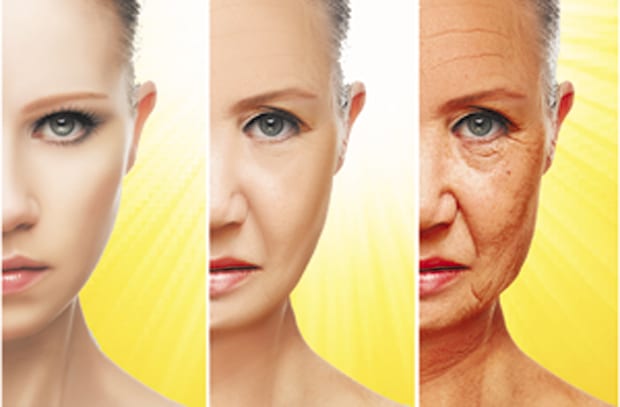
Tammye Nash | Managing Editor
Hot.
That’s the name of the game when it comes to summers in Texas. And what better way to beat that heat than to head to the pool or one of our many area lakes. And that tan you’re bound to get would just be icing on the cake, right?
Well, maybe we need to rethink that plan.
Oh, you can still head for the pool or the lake. Just be sure to protect your precious skin from the damage all that sunshine can inflict.
Skin cancer, according to the Centers for Disease Control, is the most common form of cancer in the United States, and melanomas of the skin are the most common type of skin cancer.
In 2011 — the most recent year for which CDC data is available — 65,647 people were diagnosed with melanomas of the skin in the U.S. Of those, 38,415 were men, according to the U.S. Cancer Statistics Working Group.
In that same year, 9,128 people — 6,001 men and 3,127 women — died from melanomas of the skin.
Those numbers are scary enough, in and of themselves. But a new study released in March by researchers from the University of California, San Francisco, suggests that gay and bisexual men in this country get skin cancer at twice the rate of heterosexual men.
Twice the rate.
Researchers mined data from government health surveys conducted in California between 2001 and 2009 to come up with their numbers. They also found that gay and bi men are more likely to engage in indoor tanning than straight men.
About 6.6 percent of gay and bi men in the study had experienced skin cancer, compared to only 3.3 percent of the straight men. And around 5 percent of the gay and bi men said they had participated in indoor tanning in the past year, compared to only 1.7 percent of the straight men.
Lesbians and bi women, according to the study, are no more likely than hetero women to get skin cancer or to engage in indoor tanning.
The UCSF researchers said they believe that indoor tanning — or ultra-violet (UV) tanning — plays a significant role in the increased risk of skin cancer among gay and bi men. Statistics from an earlier study cited by the Skin Cancer Foundation backs up that premise, saying that UV tanners are 74 percent more likely to develop skin cancer.
UCSF Associate Professor of Dermatology Sarah Arron stressed the importance of making sure people see the link between indoor tanning and skin cancer. “The primary reason that men and women engage in indoor tanning is because of the cultural association of tanning with a healthy look and overall attractiveness,” Arron told USA Today. “We need to dispel the myth of the healthy tan.”
And more recent news, this from Consumer Reports, suggests that even those of you who thought you were protecting your skin by using sunscreen might not be as safe as you thought.
Of the 34 sunscreens tested by Consumer Reports, 11 failed to meet the SPF levels advertised on their packaging, especially after being exposed to water.
Dallas dermatologist Dr. Farhad Niroomand noted that in truth, there’s not much difference between SPF 30 and SPF 100. He recommends using sunscreen with SPF 30-50 and applying it every two to three hours while you’re in the sun. After two or three hours, he added, get out of the direct sun for awhile to let the skin DNA repair itself. Then re-apply your sunscreen before heading back out.
He said that the FDA has recently reclassified labels on sunscreens, “so major reputable brands should be okay.”
Avoiding the sun, Dr. Niroomand added, is better than any sunscreen. That means wearing SPF-proof clothing, hats and shades when you’re in the sun. And Dr. Breck Thrash with Highland Dermatology agreed.
“Physical sun blockers are always better than chemical sun blockers like sunscreens,” Dr. Thrash said. “Zinc oxide and titanium dioxide block both UVA and UVB rays, and that gives you complete coverage.”
Chemical blockers block either UVA rays or UVB rays, not both. And the chemical sunscreens tend to carry an increased risk of causing allergic reactions. Plus, Thrash reiterated, “the chemical sun screens get worn out by the sun; they have a finite life span.”
If you’re going to be in the sun, “definitely put a physical sun blocker on your face and the backs of your hands. Use the more expensive zinc oxide or titanium dioxide as a base coat, then add the cheaper sunscreens over that for extra protection,” Dr. Thrash said.
He noted that physical blockers have been improved so that they now rub into the skin better and are transparent instead of white. They are also hypoallergenic.
Dr. Thrash added that people with richer complexions, such as Hispanics and African-Americans, are not immune to skin damage from exposure to the sun. They, too, should wear sun blockers and sunscreens. And even on cloudy days, the sun can damage your skin.
“It’s not that damage from the sun will be worse on cloudy days. It’s that people tend to stay out longer on cloudy days because they don’t think they are getting any sun,” he said.
That’s similar to the reasoning behind a recent study from Australia which seemed to indicate that wearing sunscreen didn’t prevent the skin from being damaged by the sun.
“It’s more likely that people put on sunscreen and they think they are protected so they stay in the sun longer,” Dr. Thrash said. “Remember, just because you’ve put on sunscreen or a sun blocker, you aren’t making yourself invincible.”
This article appeared in the Dallas Voice print edition May 22, 2015.
Here comes the sun — and it’s bringing skin damage with it

